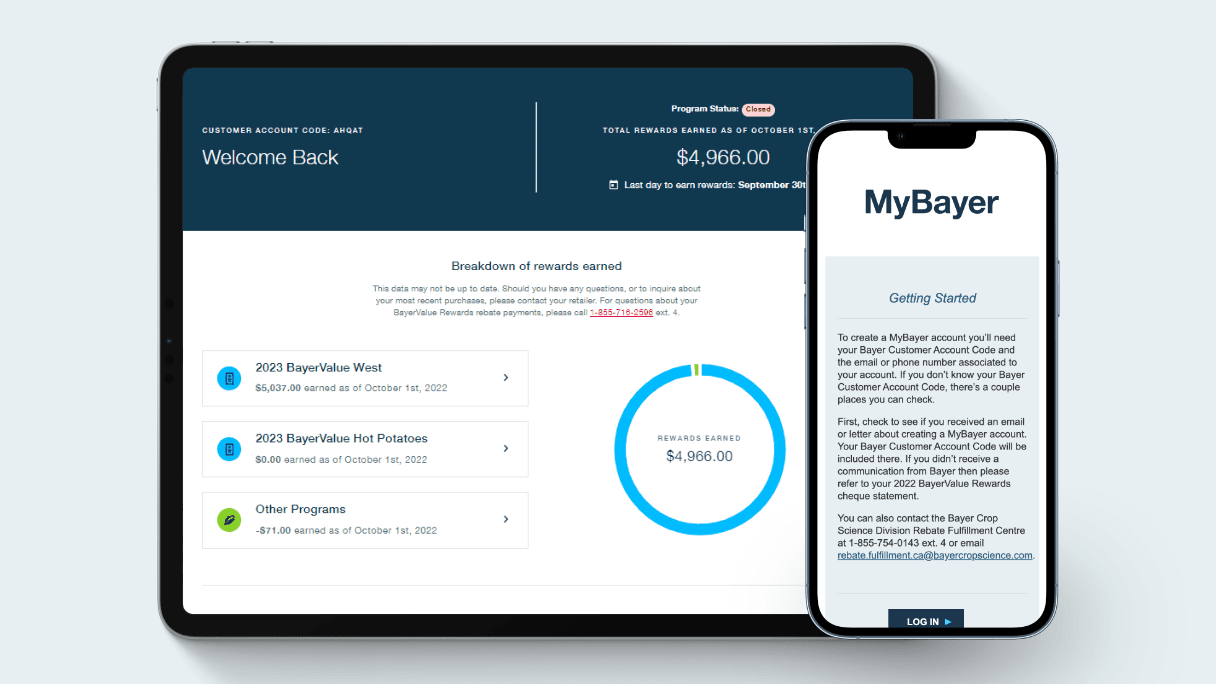Herbicides
From grass weeds, broadleaf weed, all-in-one formulations to pre-emergent control, early removal and in-season solutions, you’ll find everything you need to address your worst weed competition and manage the threat of herbicide resistance.
search-for-crop-protection
result-count-text-showing 12 result-count-text-of 23 result-count-text-results
HERBICIDEBuctril MBroadleaf
Cereals
Corn
- 6Bromoxynil
- 4MCPA
- Controls 28 different broadleafs with excellent crop safety. Registered for use on wheat, barley, oats, flax, corn, fall rye and seedling grasses
- Dual modes of action provide both systemic and contact activity
- Available in Bulk for added convenience
- With no confirmed resistance in Canada, Buctril M herbicide continues to stand the test of time.
HERBICIDECirrayGrass
Cereals
- 1Fenoxaprop-p-ethyl
- 1Pinoxaden
- Unique Group 1 combination provides premium control of wild oats in spring wheat and barley
- Fast acting grass herbicide with a wide window of application from the 1 to 6 leaf stage plus 3 tillers on the main stem
HERBICIDEHuskie® PREPre-Plant, Pre Emergent Herbicide
Cereals
- 27Pyrasulfotole (Group 27)
- 6Bromoxynil (Group 6)
- Rapid burn down activity
- Consistent early-season control
- Efficient and reliable, even on herbicide resistant broadleaf weeds (including Group 2, 4, 5, 9, 14)
- Enhances cereal pre-burn tank-mixes like Roundup Transorb® HC herbicide
HERBICIDEInfinityBroadleaf
Cereals
- 6Bromoxynil
- 27Pyrasulfotole
- Infinity, powered by Group 27 pyrasulfotole and Group 6 bromoxynil, is a key resistance management tool with fast acting contact and systemic activity on the toughest weeds
- Controls the widest range of the toughest broadleaf weeds, including kochia, buckwheat and cleavers
- Tank-mix friendly Infinity is the preferred tank-mix partner with all major graminicides including: Puma® Advance, Axial®, Horizon® and Liquid Achieve®
- Wide window of application
HERBICIDEInfinity FXBroadleaf
Cereals
- 6Bromoxynil
- 4Fluroxypyr
- 27Pyrasulfotole
- Contains three herbicide groups providing both contact and systemic activity.
- Industry leading control of Canada fleabane and chickweed.
- Exceptional broadleaf weed control and resistance management with Group 27 chemistry.
HERBICIDELaudisBroadleaf & Grass Weeds
Corn
- 27Tembotrione
- Excellent post emergence broadleaf control, including tough to control glyphosate-resistant weeds such as Canada fleabane, giant ragweed and waterhemp
- Built-in safener for exceptional crop safety on field corn, seed corn and sweet corn types with favorable rotation intervals
- Rapid burndown and up to 3 weeks of residual activity at the high rate of 220 mL/ha (89 mL/ac.)
- Excellent resistance management tool and tank-mix partner with Pardner® herbicide and Roundup® herbicide brands
HERBICIDENortron SCGrass
Fruits
- 15Ethofumesate
- For the best weed control in sugar beets, use Nortron pre-emergent, followed by Betamix post-emergent
- Crop-safe, effective broad-spectrum weed control in sugar beets
- Flexible timing to suit your operation
- Tank-mix options to target specific weeds
HERBICIDEOlympusBroadleaf & Grass Weeds
Cereals
- 2Propoxycarbazone-sodium
- Provides exceptional, season-long control of foxtail barley and other tough to control weeds.
- Get the weed control you need, even in cooler conditions, with no-recropping restrictions.
HERBICIDEOption LiquidGrass
Berries & Grapes
Corn
- 2Foramsulfuron
- Option Liquid provides broad-spectrum control of grassy and key broadleaf weeds in corn.
- With a wide window of application from the one-to-eight leaf stage of corn.
- Excellent broadleaf weed control with many approved broadleaf partners
- Superior crop safety – pre-formulated with a patented safener
HERBICIDEPardnerBroadleaf
Canola
Cereals
- 6Bromoxynil
- Excellent tool to manage Group 2-resistant weeds.
- Increased control of troublesome broadleaf weeds like wild buckwheat and Group 9-resistant kochia.
- No re-cropping restrictions.
- Excellent crop safety.
HERBICIDEPuma AdvanceGrass
Cereals
- 1Fenoxaprop-p-ethyl
- Control of barnyard grass, green and yellow foxtail and wild oats
- Superior crop safety in barley and wheat
- Wide window of application (1 to 6 leaves on main stem plus 3 tillers)
- Excellent tank-mix partner with Infinity, Infinity FX and other permissible broadleaf herbicides
HERBICIDERoundup Transorb HCNon-Selective Herbicide
Canola
Cereals
Corn
Soybeans
- 9Glyphosate
- Excellent consistency and weed control
- Trusted performance
- 60-minute rainfast guarantee*
- Product service and support you can rely on
